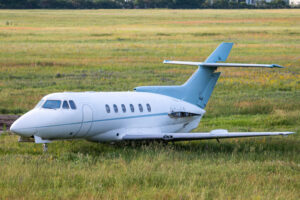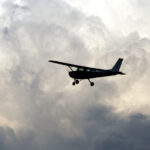Pilot Training for Distractions in the Cockpit
The issue of distracted driving receives significant attention, with growing concern over accidents caused by drivers who are not paying attention. As the automation of airplanes continues to advance, there is a question as to whether distracted flying accidents will become a more prominent concern. This raises the question of whether pilot training should address this topic in flight schools nationwide. It is important to note that distractions go beyond texting or using maps while driving or flying; mental distractions can also pose significant dangers.
Example of Distracted Flying
In an accident that took place in the mountainous region of North Carolina, a pilot made a series of alarming errors, resulting in substantial damage to the helicopter. The incident occurred at night, with a patient and two medical personnel on board.
Despite being aware of the highest obstacle along the route at 6100 feet, the pilot set the autopilot altitude to 5500 feet. To make matters worse, he then decided to divert his attention to the logbook and night vision goggles, completely disregarding the deteriorating weather conditions.
With his focus on the logbook, the cloud ceiling began to lower, prompting the pilot to further decrease the autopilot altitude to 5000 feet, 1100 feet below the highest obstacle. Then, in a moment of distraction, he failed to notice the rapidly approaching trees until it was too late.
The impact with the trees caused the vertical stabilizer to separate, but thankfully, the pilot managed to make an emergency landing on a nearby road. However, the helicopter suffered significant damage.
While the sequence of events is perplexing, one cannot help but question the pilot’s state of mind. Why did he disregard the warning about the highest obstacle and lower the autopilot altitude not once, but twice? Additionally, why did he choose to check the maintenance logs at night, while wearing night vision goggles, and fly in the mountains with a decreasing ceiling?
Causes of Distracted Flying
To avoid distracted flying, it helps to promote pilot training that includes potential causes and corrections of distracted flying.
- Types of distractions: Distractions can come in various forms, including visual, auditory, cognitive, and physical. These distractions can impair the pilot’s ability to focus on monitoring the aircraft and its surroundings, leading to a loss of situational awareness.
- Situational Awareness: Pilots need to maintain high levels of situational awareness to make informed decisions and respond appropriately to changing conditions. Distractions can cause pilots to lose track of critical information and may result in errors in judgment or emergency response.
- Decision Making and Emergency Response: Distractions can affect the pilot’s decision-making process and slow down their emergency response time. In-flight emergencies require quick thinking and action, and distractions can hinder this process, resulting in disastrous consequences.
- Risk of decreased attention and focus: Distractions can lead to decreased attention and focus, which can have significant consequences in flight. Pilots have to manage multiple tasks simultaneously during flight, and distractions can prevent them from completing these tasks effectively and efficiently.
- Specific Scenarios: Mid-air congestion, degraded weather conditions, or equipment malfunctions are specific scenarios that illustrate the dangers of distracted flying. In these situations, distractions can make it difficult for the pilot to make quick decisions and take appropriate actions, leading to accidents.
To remain vigilant and focused during flight, pilots should use strategies such as:
- Limiting distractions: Limit distractions as much as possible by focusing on the essential tasks and minimizing unnecessary communication with passengers or crew members.
- Improved Awareness: Maintain high levels of situational awareness, regularly checking instruments and surroundings, monitoring the weather, and communicating with air traffic control.
- Self-awareness: Be aware of their own limitations and take breaks when necessary to avoid fatigue.
- Effective Communication: Communicate effectively with their crew members and air traffic control to ensure that everyone is on the same page and avoid misunderstandings or confusion.
Distractions can be hazardous to pilots during flight, and pilots must take steps to manage potential distractions, improve awareness, and stay alert to the constantly changing conditions of the flight environment. By doing so, pilots can ensure a safe and successful flight for themselves and passengers.
RELATED CTS TRAINING









